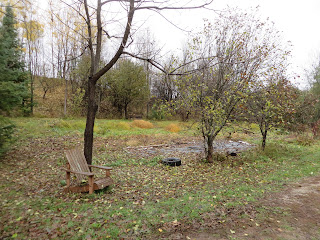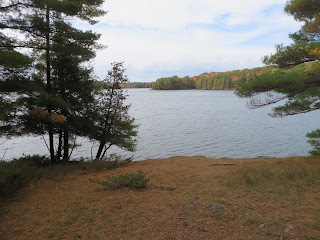Update December 17:
Thanks to those of you who have responded to the year end survey. Glad to hear you have had a good experience. Having said that, I am concerned that I am not getting the negative feedback that I suspect is out there...I didn't consider this season to be THAT good.
Still time to send your survey results in,, I am hoping to get some feedback from someone who has had a less than favorable season. Constructive criticism is always welcome here.
The only other news is that we are grinding our way through the land purchase. Still a couple of hoops to hop through after an early detour, it is still not a guaranteed close.
Update December 4th:
We are in the midst of a property offer...and all of the paper pushing, meetings, and coordinating that entails.
I have received four replies from the year end survey, thank-you for taking the time to fill these out. There is no hurry. I hope to have enough information by mid December to help make some decisions for next season's plans.
I won't have too much time in the coming weeks to work out any other possible plans for next season, other than what I have to post later today.
If you have any comments about the options thus far on the "Potential Plans for 2019" page, feel free to send them in.
Bob
Hello Everyone:

This is a post intended for mid October. An abrupt change in the forecast changed all my priorities and prevented it from being completed.
One of the strengths of the small scale farm model is how nimble they are - change can be prepared for on short notice.
How quickly the weather changes. Looking at the forecast last night (Sunday), it seemed to me as if the next 5 days were not too cold and what appeared to be a slight warming trend toward the end of the week.
Now I see that the forecast is suggesting a minus seven later in the week. That will be tough, but with a little extra effort, I should be able to protect the crops sufficiently.

Some crops can do without protection, such as these carrots. The frost might kill off the greenery, but the roots will improve flavor after a frosting.
With time being so valuable, setting up row covers can be reserved for elsewhere.

Still plenty to do...and less time to do it. Work for the past week has focused on getting beds cleaned up for next season.
Cultivating any weed growth that may have accumulated in the plants under story, aerating the soil with the broad fork - a full body workout that left me feeling slightly euphoric with runners high - amending the soil with compost and rock amendments of phosphorus and greensand, and another round of cultivating to work the compost in.

Calphos is a rock based amendment providing calcium and phosphorous to the soil, which in turn feeds the plants.
Greensand is another rock amendment derived from ancient seashore deposits, providing potassium and over seventy micro nutrients in a form that may be taken by the plant as needed.
Roots, fruits, and most brassica crops tend to perform better in soil that was amended the previous autumn.

There are other benefits to getting the beds prepared in the fall.
Everything is growing quickly in the spring - especially the weeds. The more germinated weed seeds that are wiped out by surface cultivating in the fall, the fewer will sprout next season.
With the beds ready to go, a late can spring has less impact. As I learned this year, a very late spring can nullify the head start.
Next years country is waiting...
I don't do very much production planning until after the ground has frozen. When the freeze occurs, no more work on the beds is possible.
This gives me a limit from which I can plan my early spring work from.
Knowing that, I can calculate how many customers the field is ready for.

The garlic beds are now cleaned up and only need a bit of raking to smooth out the surface to prepare them for the fall planting of garlic bulbs.
This is a very time dependent task, it needs to be done before the ground freezes. The freeze date in our area has 'never' been before November 15, but with the weather cooling considerably over the past two weeks, I suspect sooner is better with this task.
Here another amendment is added. I collect damp fallen leaves in the autumn and store them for a season, creating a leaf mold amendment, which some garlic growers claim is beneficial to garlic.
In the fall of 2017, I also used leaf mold when preparing the next seasons beds for onion and leeks. I made this assumption on the knowledge that these crops are closely related to garlic.
I credit this as one of the reasons my onions and leeks did so much better than in seasons past.
Look closely and you can see the leaves incorporated into the bed.

Days later...the frost has finished off the zinnias (foreground). The russian kale (this side of the green watering can) has not been negatively effected by the hard frost.
The hard frost has frozen the row covers to the ground, so I can't look under them (without tearing the fabric) until the day has warmed up.
Lots of suspense until then.

The cold does effect kale. The leaves darken in response to chemistry changes within, making them more pleasing to the eye for those who like purple leaves.
Brassica crops taste better after frosting, the result of the chemistry adaptations the crop uses to protect itself from the cold.
Better eating through chemistry!

A few days later, another chilly night and some snow. The kale is still going strong.
In the event I changed my mind about covering the kale, I had pre-positioned the row cover hoops.

This worries me. The cover has flattened under the weight of the snow, bringing the chard leaves into contact with the chill of the snow.
I had considered adding extra hoops to some of the cover should this occur, but there were other details to attend to the day before.

The carrot tops are limp from the snow exposure. 48 hours later, they are upright again, indicating that there is still some growth occurring in the roots.
Leaving the carrots our through the first snow provided an extra ten days or so of growing time. Slower at his time of year, with shorter days, but every bit counts with this crop seeded a little later than I prefer.

Finally, some covers can be removed to see how other crops fared.
The chard made it. Some years I am not so lucky with this crop's cold resistance.
The red chard in particular responds to the cold by changing leaf color to darker red or even a bronze hue.
I leave the cover off during the day to allow the soil to soak up heat from the sunshine.
Always a challenge balancing between leaving it in the ground and harvesting it. Either way, the crop needs protection from the cold. I have more control over harvested crops placed in the nursery, but space is limited. As well, I prefer to keep the leaves as fresh as possible

Inevitably, the season comes to an end.
By now, the row covers are dry and stored away from rodents - who love this for nesting material it seems - and the barn is weatherized for the winter.
Now I have time to get caught up on the writing!

 The farm also comes with a myriad of minor repairs and
upgrades. Most of its growing field has
not been worked for a couple of years and so will need a season of cover crops
(and if all goes well, a pair of pigs will be hired on to help out with this).
The farm also comes with a myriad of minor repairs and
upgrades. Most of its growing field has
not been worked for a couple of years and so will need a season of cover crops
(and if all goes well, a pair of pigs will be hired on to help out with this). If any of you are interested in taking part in any of
these projects, feel free to let me know.
We have all winter to plan and a full season to complete them. No one will leave the farm empty handed.
If any of you are interested in taking part in any of
these projects, feel free to let me know.
We have all winter to plan and a full season to complete them. No one will leave the farm empty handed.  As for this season’s growing plans…I intend to use the
Mansfield location to continue growing the produce this year as I have some
beds that are well amended and ready to go for spring.
As for this season’s growing plans…I intend to use the
Mansfield location to continue growing the produce this year as I have some
beds that are well amended and ready to go for spring. I have listed one possibility as to what our production
plan may look like for next year, on the “Potential Plans for 2019” page (see
the tab above).
I have listed one possibility as to what our production
plan may look like for next year, on the “Potential Plans for 2019” page (see
the tab above). We will be out at the farm later this month to meet with
the farm sellers to go over a lot of the growing details that they have to
share (maps of their beds and lists of their perennial plants), details such as
last guaranteed date before ground freeze, overview of the new tractor, quirks
that the very old barn may have, etc…
We will be out at the farm later this month to meet with
the farm sellers to go over a lot of the growing details that they have to
share (maps of their beds and lists of their perennial plants), details such as
last guaranteed date before ground freeze, overview of the new tractor, quirks
that the very old barn may have, etc…
















































